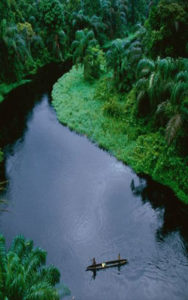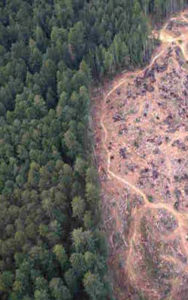NATURE: FLORA
I've been on a bit of [quite a bit] a hiatus, busy being intriguing by life, it's personal dramas and boundaries, and here it is: winter rolling into spring [my favorite season], beginning to displaying the full re-cycle of life. There are delightful, amazing, mystifying vistas everywhere; one need but look. When I get out of my complacency [or my dramas] I always find something that is intriguing, either in its simplicity or complexity.
There is no place (including the proverbial 'concrete jungle') that does not have some form of Nature in evidence. Years ago, on a sightseeing trip while in San Francisco, I had toured the island Alcatraz ~ and one of the sights that lightened-up that specific tour was seeing a tiny flowering plant pushing through a crack in a crumbling portion of the cement wall that enclosed the inside entrance to that renowned prison. Hope, and Nature, springs eternal. Where have you spotted something growing that amazed you? Go ahead, look around !
For this posting, I'm focusing on the Boundaries related to Nature; “flora” in particular. The schoolmarm within {and she's a delighted lover of info} found the following definition:
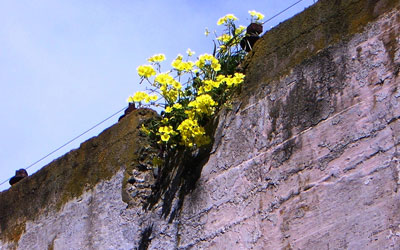
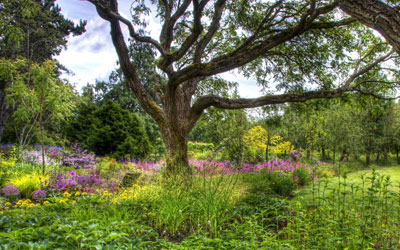
“Flora is a collective noun and it comprises all plants, trees, fungi and bacteria that may be present in a place at any given point of time. ... Flora can be native, agricultural, or weed. Native flora of course refers to all plant species that are indigenous to a place and not those that have been imported and then grown in a place. Agricultural flora refers to plants that are again and again grown by human beings in gardens and farms for their use. 'Weed' flora is those plants that are considered useless by humans and that are sought to be eliminated by mankind.” [Thanks Merriam-Webster !]
It may appear 'odd' that I am writing about Boundaries, in reference to Nature ... and yet … again, if one just looks ... there are examples of natural nature Boundaries across this planet. Certain terrains dotted with plants have areas wherein they thrive. They also have Boundaries where they don't 'go,' naturally.
Indeed, some have been 'transplanted' unnaturally and mutate (modify their boundaries), and there are some of those transplants that encroach on the boundaries of the native growth: Ask anyone in the South, and they will tell of the ubiquitous kudzu {originally introduced as an ornamental plant back in the late 1880s}, thought to be a great erosion-control plant {boy-howdy !}; or the melaleuca trees shading out indigenous plants in the Florida Everglades. In Scotland the rhododendron, introduced to native gardens after first being seen in eastern Mediterranean environs, 'escaped' tended areas and now grow profusely in Scottish forests, shading out the under-story vegetation. {“Blimey, it's such a pretty flower !! I think I'd like to 'ave one in me yard.”} This behavior is common pretty much across the globe ~ so I am not singling any one area 'out.'

There are the natural Boundaries that are as “in your face” as with Geographic boundaries. There are forests on every continent, sans Antartica (just like mountain ranges on every continent discussed in the previous post). One can choose to hike (or hack) their way through the Adirondakes, the Scottish Highlands, or the Amazonian Rainforests. There's the notable Sherwood forests in England where Robin Hood and his Merry Band of Men resided, as well as the dense German forests of Hansel and Gretel. {The Brothers Grimm loved using spooky forests in their parables of life and lessons.} For those who have ever seen the film Crouching Tiger, Hidden Dragon the Anji Bamboo Forest is breathtaking.

(By the way, trees and forests 'talk' to one another too. No kidding ! Check out this short vid about 'Mother Trees': http://www.karmatube.org/videos.php?id=2764 . )
Moving on. Other Boundaries appear more tenuous and subtle: the sand dune's tall grasses, the spanish 'moss' often seen hanging on southern trees; “nursery logs” (a fallen tree) which, as they decays, provide transitional environments for seedlings, and, also provide shade or support to other plants. A beautiful give-and-take ~ death to birth.
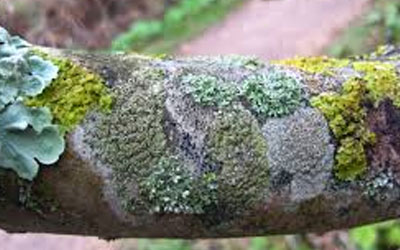
As an aside, one of the most fascinating plants, to me, is lichen ~ which are not really plants. I found this to be rather 'Dr Frankenstein-ish' or “witches' brew”: Lichen are referred to as "composite organisms" made up of at least two (and usually three or four) completely different types of organisms. It's as if you combined an animal ~ such as a chimpanze ~ with a plant ~ let's say a sycamore, then add a dash of a fungus, and a smidge of some active parasite ~ ending up with a concoction completely different from those individual pieces and parts. This {ta-da} becomes lichen ~ parasitically growing on felled woods, assisting in the decomp and nurturing of the soils. A beautiful symbiotic process of Nature, working within and for itself, to sustain balance. Wow! And ... surreal. {Kinda belies the old Chiffon margarine commercial of “It's not nice to fool Mother Nature...”}
Moving from lushness to arid, for those who have had occasion to travel across the varied deserts of the US, it appears there are miles and miles (and miles) of 'nothingness.' Oh contraire ! The deserts of the southwest are alive with a resiliency and determination that most humans cannot echo.
Maybe June through February you've seen the blowing tumbleweed, a lone Joshua tree, the reaching arms of a Saguaro or the squat roundness of a Barrel cactus. Yet ... when the rains fall across those regions …. ah, when the rains fall … there is no more captivating and colorful scene than a desert in full bloom: The greens, yellows and burnt oranges of Sagebrush in the Great Basin Desert; Chihuahuan Desert's creamy-white stalks of flowering Yucca, and Prickly Pear Cactus {whose pods can be used to make a great jelly!} that have colors ranging from hot pink and reds to brilliant yellows or deep lavender.
The Mohave's Joshua trees, previously resembling an alien on the flat landscape, is now loaded with huge clusters of white blossoms, and surrounded by acres and acres of other flowing plants. One can then travel over to see the greening mesquite in the Sonora Desert. Yes, it is all a miraculous sight, with each specific desert region displaying what is unique unto itself, especially as all these vegitations are documented as the most drought-resistant plants on the planet.
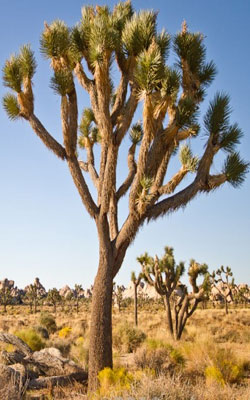
Interestingly enough each desert area or zone is known to have specific plants that seem to thrive there, and no where else. Boundaries. These 'magical' plants can survive years of drought on the water collected from A. Single. Rainfall. A single rainfall. Surviving years. Whoa ! A testament to endurance. Einstein was, once again, right.
Ironically, in that give and take around the planet, “weather” and plants have a symbiotic relationship. Plants affect and contribute. Let's look at West Africa's Sahara desert {which, by the way, is as wide as the continental United States!!}:
- Dry arid air (with no moisture-contribution of plants) blows into the Atlantic ~ meets water surface temps conducive ~ keep on a-rollin' across into Caribbean basin ~ and voila ~ if conditions are right ~ we've got a hurricane. Like Harvey. Can be life destroying.
- Fascinatingly, that same dry arid air, full of sand particles, blows further southward across the entire Atlantic and deposit themselves a continent away into the Amazon rainforest. Up to 27 million tons of the stuff arrive there every year And ?? So what? Well, phosphorous from the sand feeds and brings balance to the environmental needed in this rainforests. Life giving.
Gift of Boundaries
That's the wonderful gift of Boundaries. The co-creation and support when and where appropriate, and the clarity of purpose when saying 'yes' and when saying 'no.'
Also … in the symbiotic process … looking at those rainforests which just received nutrients to thrive, huge portions of the Amazon are being cut down at an amazing rate. Depleting the rain forests affects the oxygen supply ~ globally.
“Since 1978 over 289,000 square miles of Amazon rainforest have been destroyed across Brazil, Peru, Colombia, Bolivia, Venezuela, Suriname, Guyana, and French Guiana., driven by industrial activities and large-scale agriculture.” Check out: http://rainforests.mongobay.com/amazon/amazon_destruction.html.
“Vast areas of rainforest were felled for cattle pasture and soy farms, drowned for dams, dug up for minerals, and bulldozed for towns and colonization projects. At the same time, the proliferation of roads opened previously inaccessible forests to settlement by poor farmers, illegal logging, and land speculators.”
So let me see if I 'get' this: 71% of the earth's surface is water, and only the remaining 29% = land surfaces. (That's where most of us reside !) Only 31% of this 29% of the earth's land-surfaces is covered by forests. Forests supply the planet's oxygen. (In scientific circles, the Amazonian Rainforests are referred to as “the planet's lungs.”) Hmmm … deplete the forests, reduce the oxygen. The breath I breathe ~ and all other human lives ~ are dependent on oxygen. It {to me} is a no-brainer. Breathing is a Boundary I kinda hold near and dear.
Therefore, boundary-wise, that's why there are now Environmental Laws on every continent (again sans Antarctica), and wherein a majority of countries within each of these continents have laws stating safeguards. I'm not a big advocate of lots of laws and mandating morality. Yet … {and most of us have a 'yet'} humans have and can give voice to a boundary-cross. The non-human-speaking living things growing on this planet have a voice too.
However, there is no little-box-in-the-lower-part-of-the-TV-screen where their 'words' are being translated into human-speak. Hence {don'tcha love that word}, there are humans who choose to listen, see, and ultimately speak for these co-inhabitors of the earth. Check out the Nature Conservancy if you want to help or are simply curious: www.nature.org (And, if you love 'being in nature' and like to hike, the next time you do ~ offer up a quick 'thank you' to John Muir [1838-1914] and others of his ilk. They 'got it' even a century ago.)
As noted in the M-W definition, there is also organized plant farming that happens around the world. There are the terraced hillsides in many Asian counties, as well as in Europe. Hydroponics and container gardening. Wet fields of rice in South America, lavender in France, and acres of tulips in Holland. Urban farming happens on rooftops and in abandoned blocks of land within cities. Cropland or pasture, humans grow things. What about you? Do you grow plants for visual pleasure (and the bees thank you) or take great joy in a crop of cucumbers or kale? Maybe you do both. Maybe you do neither.
Have you visited the Botanical Gardens in your (and surrounding) states? Checked out the mysterious and somewhat spooky {to me} swamps (Okefenokee for one), marshes, and peat bogs? Do you mulch plants or use homegrown compost? {Some friends of mine go to a local stable and take home wheelbarrows of horse manure for their gardens.} Do you grow anything at all ~ or simply enjoy the gifted bounty from others? Do you appreciate and have houseplants? Do you pour over the recent issue of the Farmer's Almanac or study the 'USDA Plant Hardiness Zone Map' so you can figure out why the bougainvillea doesn't prosper in the yard in Minneapolis?
What IS your connection to a growing-Nature? The fact is, you do have one. This post's purpose is to ask you to bring into Conscious awareness that fact. Secondary to breathing, you eat. All living things do. Celebrate that. And give thanks.
Namaste' Lin


